The parish priest of Črnomelj, Lojze Jože Žabkar, wrote in his journal Izpovedi (Confessions) on 3 August 1943: »Metlika – nothing but bunkers, wires, trenches. The Italians are still stringing the wire (Rosalnice – Slamna vas). What for, when the empire is collapsing? I have many fond memories of Metlika – I was a curate there six years ago and it was wonderful. But today everything is different.« Žabkar, Izpovedi, 89.
The Italian Army marched into Metlika on 4 May 1941. In the spring of 1942, they enclosed it by barbed wire, firing trenches and 20 bunkers. The partisan sketch shows the course of the barbed wire around Metlika with a red line. A report from the Headquarters of the Detachment of the Eastern Dolenjska Region dated 15 February 1943 contains an attachment to the sketch. It gives a detailed description of the armament and locations of individual forts. It states that around 500 men were stationed in Metlika, including the Militia, Carabinieri, the Financial Guard and the White Guard. In the immediate vicinity of Metlika, near Rosalnice, the Italians began building the Bela krajina section of the fortified line towards Croatia in the spring of 1943. With this fortified border they attempted to prevent partisan brigades from crossing from Croatia to the Province of Ljubljana and vice versa. Five concrete bunkers were built, and several rows of barbed wire were stretched between them. Archives of the RS.
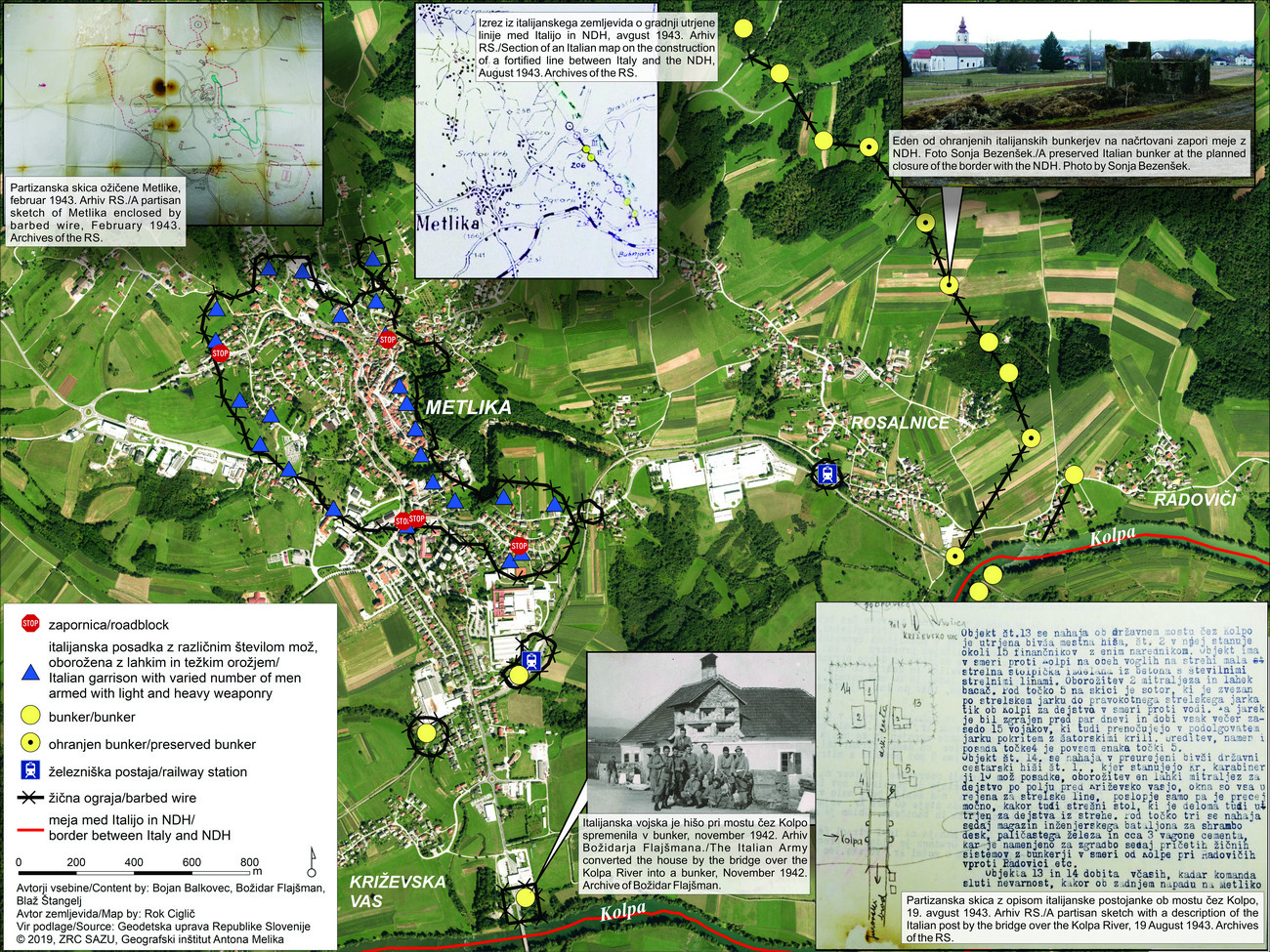
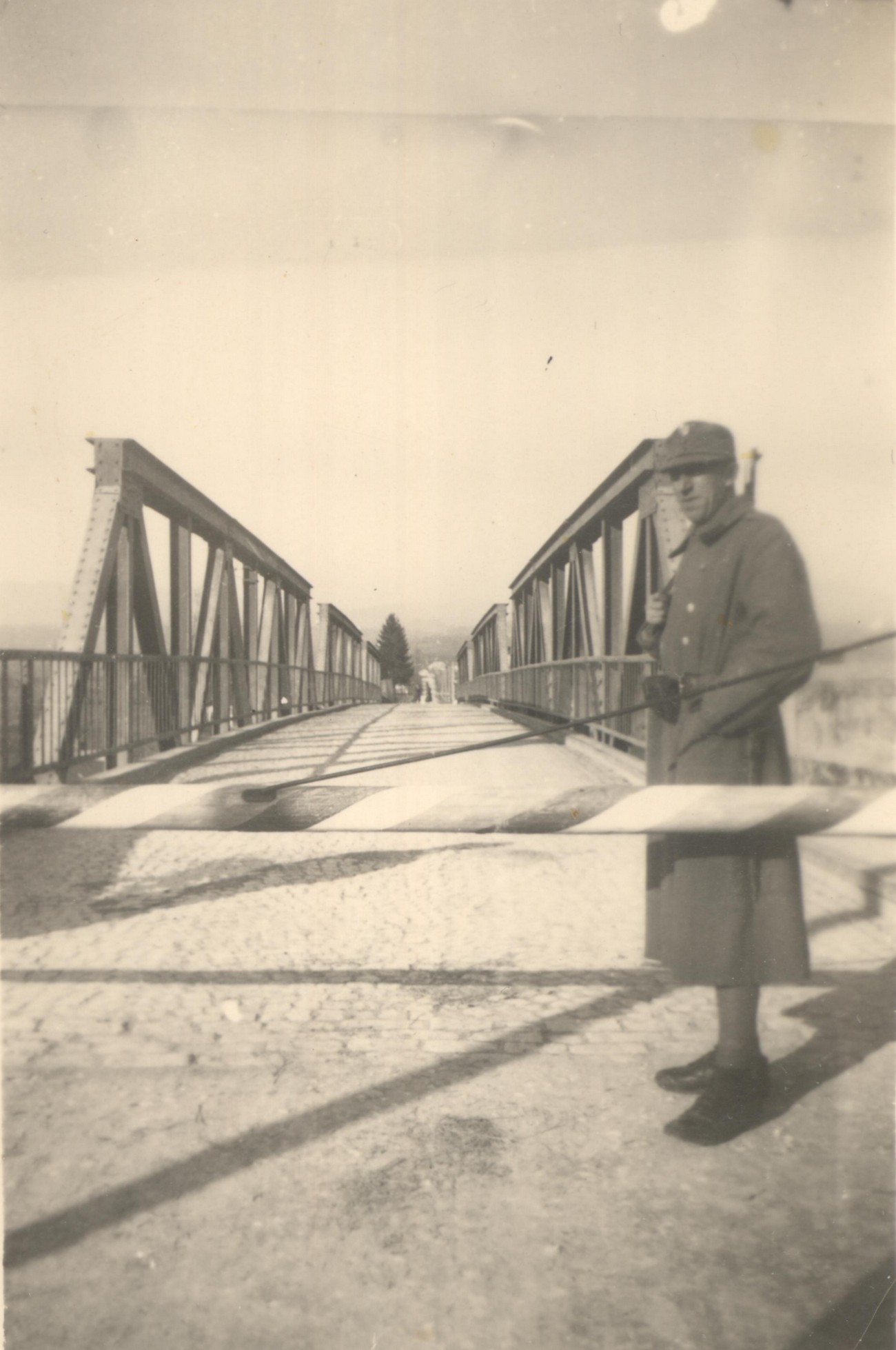
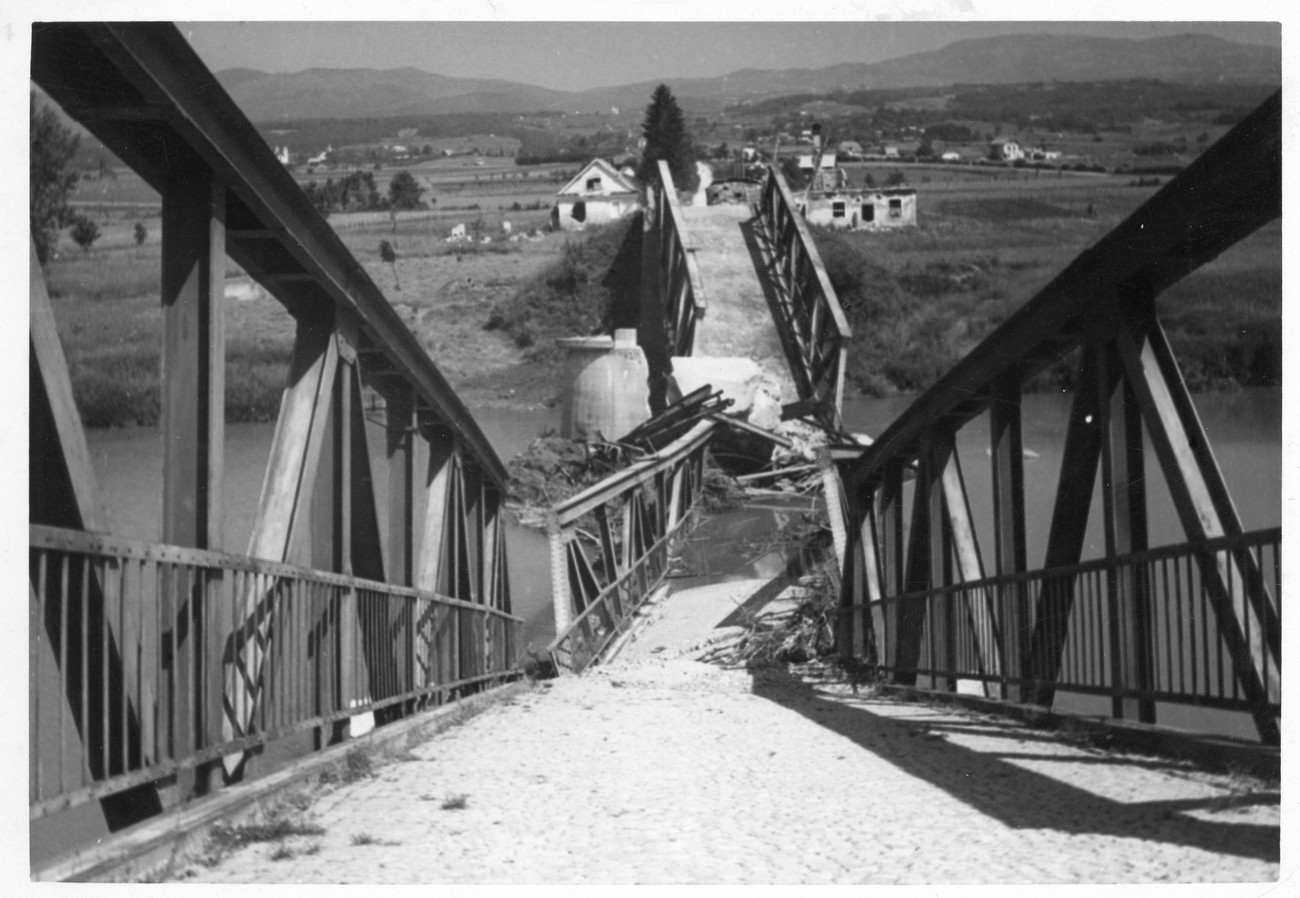
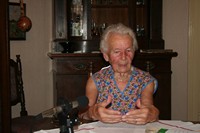
At the beginning of the occupation, the people, children in particular, went swimming at the Metlika bathing area on the Kolpa River together with Italian soldiers and officers; but later on, they needed passes to leave Metlika, which was enclosed by barbed wire.(Author: Sonja Bezenšek.)
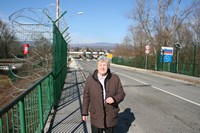
Marija Koležnik on the border bridge, enclosed by barbed wire, over the Kolpa River at Metlika on 9 February 2019. Author: Božidar Flajšman. Her birthplace is less than 500 m away by the road towards Metlika and is the closest house to the current border crossing. Where the noticeboard with the flag of the Republic of Slovenia and the European Union now stands, there once stood a house which the Italian Army had converted into a bunker (shown on the map). After Italy capitulated, the partisans mined the bridge. Marija Koležnik reminisces:
The partisans came and notified all the people nearby: open all the windows, put any glass objects on the floor and stand far back. They mined the centre of the bridge /…/ The bridge collapsed in the shape of the letter V.« Nevertheless, the collapsed bridge did not stop the Ustasha from invading. Marija had this to say:»The Ustasha first came to our Slovene territory in November 1943; it was already a liberated territory. They set ours and the neighbours' outbuildings on fire; fire raged on our property, at the Štupar residence, the Vrtačič residence, the Milčinovič residence, and in Križevska vas at the Milek residence. They only burnt the outbuildings. The Ustasha came to our house and lined us up against the wall. Because they were locals, from the Croatian villages, my father and mother knew them well, they only demanded to know where my brother was, because they knew he had joined the partisans. We were standing against the wall, waiting to be shot. I remember all of that, but I don't remember what my parents used to say that a German officer had come and yelled at the Ustasha to leave us alone. But they took our pig, a well-fed one at that. Then we put out the fire.